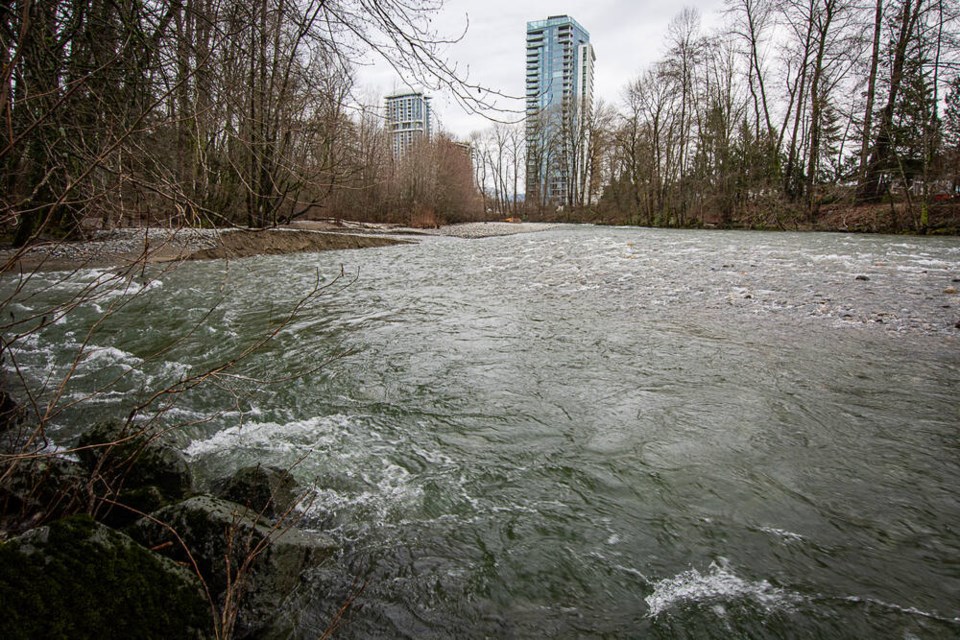Average streamflow surged to record highs over the weekend, as unseasonably warm weather washed away much of what little snowpack accumulated on the North Shore mountains this winter.
On Sunday (Jan. 28), seven-day mean streamflow at Seymour River below Orchid Creek – which feeds into Seymour lake and eventually the waters in Lower Seymour – hit 29.28 cubic metres per second, the highest for that date since 1992, when recordkeeping began at that site. Then on Monday, the average rose again to 36.98 m3/s, another record. The all-time high at that site is a weekly average of 43.86 m3/s.
New records were also set on Jan. 28 and 29 for McKay Creek at Montroyal Boulevard in North Vancouver, at 1.46 and 1.47 m3/s respectively.
Meanwhile, snowpack dipped to a five-year low at Metro Vancouver’s Palisade Lake monitoring station, at less than 300 millimetres snow water equivalent.
Sunday morning, the Lower Capilano River below Cleveland Dam reached flows of 300 m3/s. Streamflow typically peaks at that level around once or twice a year, explained Jesse Montgomery, division manager of environmental management for Metro Vancouver.
“What’s a bit special is how sustained the river flows have been,” he said, pointing to back-to-back precipitation events and rapid snow melt as the causes.
As for record high flows at a given moment in time, Montgomery said November 2021 saw some of the highest in recent history at around 500 m3/s, as catastrophic flooding devastated the Fraser Valley.
As water levels spiked over the past weekend, the District of North Vancouver warned to stay a safe distance away from riverbanks and the water’s edge, while keeping pets on leash and children close by.
The Capilano River is known to be particularly “flashy,” Montgomery said, referring to its tendency to rise and fall rapidly.



